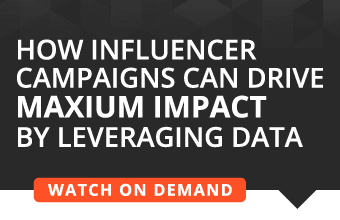Influencer marketing has emerged as a pivotal strategy in modern digital advertising, leveraging the popularity and authority of individuals with large followings on social media platforms to promote products and services. Unlike traditional celebrity endorsements, influencer marketing thrives on the authenticity and relatability of influencers, who often specialize in niche areas such as fashion, beauty, fitness, travel, or technology. This approach taps into the innate human tendency to trust recommendations from peers or individuals perceived as experts, transforming how brands connect with consumers in a crowded online landscape.
The genesis of influencer marketing can be traced back to the rise of social media platforms like Instagram, YouTube, and TikTok, where ordinary individuals amassed substantial followings by creating engaging content and cultivating communities around shared interests. These influencers, ranging from mega-celebrities with millions of followers to micro-influencers with smaller, yet highly engaged audiences, wield significant influence over consumer purchasing decisions through their ability to authentically endorse products. This authenticity is key to the effectiveness of influencer marketing, as followers perceive recommendations from influencers as genuine endorsements rather than overt advertisements. However, the credibility of an influencer can be compromised by fake followers, making tools like the instagram fake followers checker essential for verifying the authenticity of an influencer’s audience.
Moreover, influencer marketing offers brands unparalleled access to highly targeted audiences. By collaborating with influencers whose followers match their target demographics, brands can enhance the relevance and impact of their marketing efforts. This precision targeting not only increases the likelihood of conversion but also strengthens brand affinity among consumers who align with the influencer’s personal brand and values.
Beyond driving sales and brand awareness, influencer marketing fosters a more interactive and participatory form of advertising. Consumers actively engage with influencer-generated content through likes, comments, and shares, thereby extending the reach and virality of brand messaging far beyond traditional advertising methods. This two-way communication also enables brands to gather real-time feedback, monitor sentiment, and adapt their marketing strategies in response to consumer preferences and trends.
As influencer marketing continues to evolve, its role in shaping consumer behavior remains pivotal. The symbiotic relationship between influencers and their audiences cultivates a dynamic ecosystem where authenticity, trust, and relevance converge to influence purchasing decisions in an increasingly digital and interconnected world. Thus, understanding the mechanisms and impact of influencer marketing is essential for brands seeking to thrive in the competitive landscape of contemporary marketing.
Types of influencers
Influencers vary widely in reach, audience demographics, and engagement levels, categorizing them into distinct types based on their follower count and niche expertise:
- Mega Influencers: These celebrities have massive followings, often exceeding millions across multiple platforms. They include actors, musicians, athletes, and other well-known personalities whose endorsements can reach a broad audience swiftly.
- Macro Influencers: With follower counts ranging from tens of thousands to several hundred thousand, macro influencers are influential figures in specific niches like fashion, fitness, or lifestyle. They offer a balance between reach and engagement, making them ideal for brands aiming to target larger yet still segmented audiences.
- Micro Influencers: These influencers typically have smaller but highly engaged followings, often ranging from a few thousand to around 100,000 followers. They are valued for their authenticity, strong community connections, and ability to influence niche markets with personal recommendations.
- Nano Influencers: Nano influencers have the smallest follower counts, typically ranging from 1,000 to 10,000 followers. Despite their modest reach, they boast high engagement rates and deep connections within their communities. Brands often collaborate with nano influencers for hyper-targeted campaigns that prioritize authenticity and local influence.
Each type of influencer offers unique advantages depending on the brand’s marketing goals, budget, and target audience, making influencer marketing a versatile strategy capable of reaching diverse consumer segments effectively.
Mechanisms
Influencer marketing operates through various mechanisms that leverage the reach, credibility, and engagement of influencers on social media platforms to promote products or services:
- Platform Utilization: Influencer marketing primarily utilizes popular social media platforms such as Instagram, YouTube, TikTok, and Twitter. Each platform offers unique opportunities for content creation, ranging from photos and videos to live streams and interactive posts.
- Content Types: Influencers create diverse content formats tailored to their audience preferences and the brand’s objectives. This includes sponsored posts, product reviews, tutorials, unboxings, and endorsements seamlessly integrated into their regular content.
- Collaboration methods: Brands collaborate with influencers through various methods:
- Sponsored Content: Brands pay influencers to create and share content featuring their products or services. This can include one-off posts, series, or campaigns.
- Affiliate Marketing: Influencers promote products with trackable links, earning a commission on sales generated through their referrals.
- Brand Ambassadors: Long-term partnerships where influencers endorse a brand consistently, building brand loyalty and advocacy among their followers.
- Audience Targeting: Influencer marketing allows brands to target specific demographics effectively. By selecting influencers whose audience demographics align with their target market, brands can maximize relevance and engagement.
- Authenticity and Trust: The effectiveness of influencer marketing hinges on the perceived authenticity and trustworthiness of influencers. Audiences often view influencers as relatable peers, valuing their honest opinions and recommendations over traditional advertising.
- Engagement and Interaction: Influencer-generated content encourages direct engagement from followers through likes, comments, shares, and direct messages. This interaction not only amplifies brand exposure but also fosters a community around shared interests.
Overall, influencer marketing thrives on the symbiotic relationship between influencers, brands, and their respective audiences, blending promotional content with authentic storytelling to drive consumer engagement and purchasing decisions in the digital age.
Impact on consumer behavior
Influencer marketing exerts a profound impact on consumer behaviour across various dimensions, reshaping how individuals discover, evaluate, and ultimately decide on purchases:
- Awareness and Discovery: Influencers introduce consumers to new products and trends they might not have encountered through traditional advertising. Their engaging content and personal endorsements serve as powerful catalysts for generating demand, especially among niche audiences interested in specific lifestyles or interests.
- Trust and Credibility: Influencers often build strong rapport and credibility with their followers through consistent, authentic content. As a result, their recommendations carry significant weight and are perceived as more trustworthy compared to traditional advertising. Consumers view influencers as peers or experts whose opinions are valued, influencing their perception of brand authenticity and reliability.
- Purchase Decisions: Influencers directly impact consumer purchasing decisions by providing firsthand experiences and recommendations. The endorsement of a product, such as diamond rings, by an influencer can lead to increased interest and urgency to purchase, especially when accompanied by compelling storytelling or demonstrations of product benefits.
- Social Proof and FOMO: Influencers create social proof by showcasing products in use or endorsing them within their social circles. This can trigger a fear of missing out (FOMO) among consumers who desire to emulate the influencer’s lifestyle or stay current with trends, driving impulse purchases and consumer adoption.
- Emotional Connection and Aspiration: Influencers often cultivate aspirational lifestyles that resonate emotionally with their audience. By aligning products with these aspirational values, influencers can evoke desire and emotional attachment, influencing consumer preferences and fostering long-term brand affinity.
- Interactive Engagement: Influencer marketing encourages active engagement from consumers through likes, comments, shares, and participation in contests or challenges initiated by influencers. This interaction not only amplifies brand reach but also strengthens the consumer-brand relationship, enhancing loyalty and advocacy. For instance, influencers may use dynamic QR codes in their promotions to provide quick access to exclusive content or promotional offers.
- Behavioral Shifts: Over time, influencer marketing can lead to behavioral shifts, where consumers adopt new habits or preferences influenced by ongoing exposure to influencer content. This can include changes in purchasing patterns, brand loyalty, and the adoption of new products or services endorsed by influencers. Integrating a customer feedback strategy can further enhance this process by capturing consumer reactions and experiences, allowing brands to refine their approaches and better meet consumer needs.
In summary, influencer marketing transcends traditional advertising by leveraging the trust, authenticity, and relatability of influencers to profoundly impact consumer behavior. By harnessing the power of social influence and digital connectivity, brands can effectively engage with their target audiences, drive purchasing decisions, and cultivate enduring relationships in an increasingly competitive marketplace.
Psychological aspects
Influencer marketing leverages several psychological aspects to influence consumer behavior:
- Social Proof: Consumers tend to follow the actions of others, especially influencers, as a form of social proof. When influencers endorse products, their followers perceive it as a validation of the product’s quality and desirability.
- Identification and Aspiration: Influencers often portray aspirational lifestyles and values that resonate with their audience. Followers may aspire to emulate their favorite influencers by adopting similar products or behaviors, seeking to align themselves with perceived ideals.
- Trust and Authority: Influencers build trust and authority through consistent, authentic content. Their opinions and recommendations are viewed as credible and trustworthy, influencing consumer perceptions and decisions.
- Emotional Connection: Influencers create emotional connections with their audience through personal stories, experiences, and interactions. These connections foster a sense of intimacy and relatability, enhancing the impact of their endorsements on consumer emotions and preferences.
Challenges and ethical considerations
Influencer marketing, while effective, presents several challenges and ethical considerations:
- Transparency: Disclosure of sponsored content is crucial to maintain transparency and trust with audiences. Failure to clearly indicate paid partnerships can mislead consumers and violate advertising regulations.
- Authenticity: Maintaining authenticity is essential. Fake followers and engagement tactics can undermine an influencer’s credibility and the effectiveness of marketing campaigns.
- Influencer Fit: Brands must ensure influencers align with their values and target demographics. Poor fit can lead to dissonance with the audience and ineffective campaign results.
- Regulatory Compliance: Adherence to FTC guidelines and local advertising laws is critical. Non-compliance can result in fines, legal issues, and damage to brand reputation.
- Long-term Relationships: Building sustainable relationships with influencers requires ongoing management and mutual trust. Sudden changes in influencer behavior or public controversies can impact brand perception.
Navigating these challenges requires clear communication, ethical practices, and strategic oversight to harness the full potential of influencer marketing while maintaining consumer trust and compliance with regulatory standards throughout the entire marketing funnel.
Case studies and examples
Several notable case studies highlight the diverse impact and effectiveness of influencer marketing across different industries:
- Daniel Wellington: The watch brand skyrocketed to success by collaborating with micro-influencers on Instagram. By sending free watches to influencers in exchange for posts, Daniel Wellington created a viral trend and rapidly increased brand visibility and sales.
- Fashion Nova: This fast-fashion brand leverages Instagram influencers, particularly those with large followings and high engagement rates, to promote their trendy clothing lines. Fashion Nova’s influencer partnerships have significantly boosted brand awareness among millennials and Gen Z.
- Sephora: The cosmetics giant collaborates with beauty influencers on YouTube and Instagram to showcase product tutorials and reviews. These partnerships help Sephora reach a targeted audience of beauty enthusiasts who trust influencer recommendations.
- Nike: Nike utilizes both mega and macro influencers to promote its athletic apparel and footwear lines. By partnering with athletes and fitness influencers, Nike reinforces its brand image of performance and style, appealing to a global audience of sports enthusiasts.
- Flat Tummy Co: This brand markets dietary supplements through influencers known for fitness and health content on Instagram. Their campaigns often feature before-and-after photos and testimonials from influencers, aiming to persuade followers to try their products for weight management.
These case studies illustrate how influencer marketing can be tailored to fit specific marketing goals, leverage audience trust, and drive significant business outcomes across various sectors. Each example underscores the importance of strategic influencer selection, authentic content creation, and measurable impact on consumer behavior and brand perception.
Conclusion
In conclusion, influencer marketing has revolutionized contemporary advertising by harnessing the power of social influence to directly engage with consumers on a personal level. Through authentic endorsements and relatable content, influencers bridge the gap between brands and their target audiences, significantly impacting consumer behavior in several key ways.
Firstly, influencers enhance brand awareness and product discovery, leveraging their reach and credibility to introduce followers to new products and trends. Secondly, their ability to build trust and authenticity fosters strong emotional connections with consumers, influencing purchasing decisions based on recommendations perceived as genuine and reliable. Moreover, influencer marketing encourages interactive engagement, allowing brands to cultivate communities around shared interests and values.
However, influencer marketing also presents challenges, such as ensuring transparency, maintaining authenticity, and navigating regulatory compliance. These considerations highlight the importance of ethical practices and clear communication in sustaining long-term relationships with influencers and their audiences.
Looking forward, the evolution of influencer marketing will likely continue to shape consumer preferences and brand strategies in the digital age, emphasizing the need for brands to adapt and innovate to effectively harness its potential while upholding consumer trust and ethical standards.








